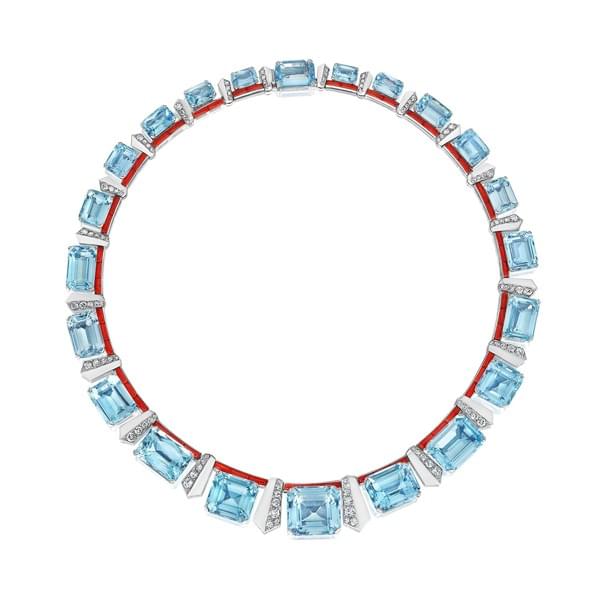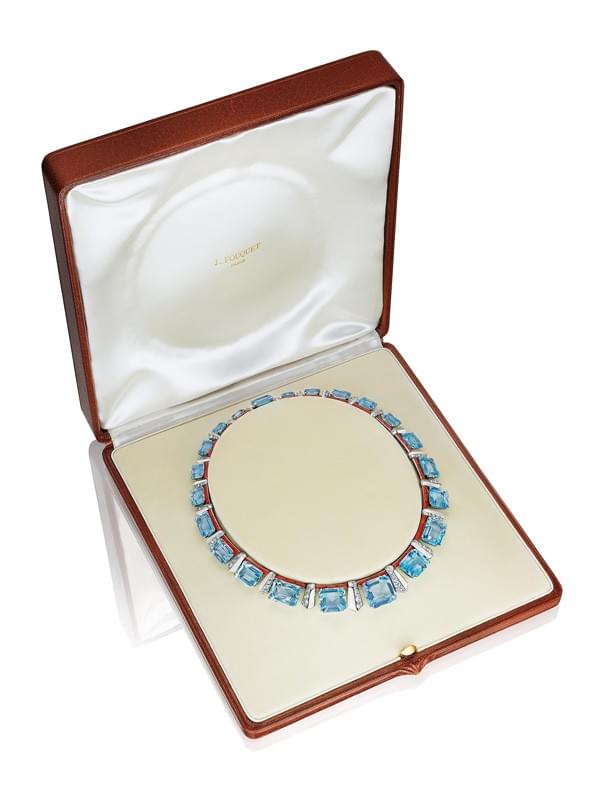
Siegelson, the New York dealer famed for curating the most important jewels of the 20th century, has just unveiled a treasure that forces the jewelry world to confront an uncomfortable question: can today’s lab-grown diamond revolution ever produce icons on par with historic masterpieces?
The jewel in question is a mid-1930s Jean Fouquet necklace, blending aquamarine, diamond, and coral in a design so bold and geometric it reads more like modernist architecture than ornament. Suspended from a ring of vivid coral rectangles, 22 emerald-cut aquamarines—an extraordinary total of 120 carats—cascade in perfect harmony. For those who understand sourcing, the feat is staggering: matching aquamarine of such consistency is nearly impossible.
Between the aquamarines lie platinum chevrons, half set in pavé diamonds totaling 3.5 carats, half left sleek and metallic. The tension between icy geometry and luminous blue embodies why Fouquet was never just a jeweler, but a sculptor in gemstones. He once said: “A piece of jewelry must be composed of masses clearly visible from a distance. Today we have become accustomed to reading quickly.” Nearly a century later, his words feel eerily prophetic.

Siegelson’s Jean Fouquet aquamarine necklace in its original case
And here’s where the debate explodes: with lab-grown diamonds flooding the fine jewelry market, are we losing the patience and rarity that gave us pieces like this? Lab-grown diamonds offer ethical sourcing, sustainability, and affordability—values today’s consumer demands. But they also reshape how jewelry is consumed: fast, customizable, and available in endless supply.
Would Jean Fouquet’s design philosophy survive in a world where aquamarine or diamond consistency is no longer a miracle of nature but a guarantee of technology? Or does that abundance rob jewelry of its struggle, of the hunt, of the intangible mystique that makes a single piece a work of art?
Siegelson’s Fouquet acquisition isn’t just a museum-worthy jewel. It’s a reminder that the debate between lab-grown vs. natural diamonds isn’t simply about price or sustainability. It’s about whether the future of jewelry will continue to create cultural milestones—or just perfectly polished products.
